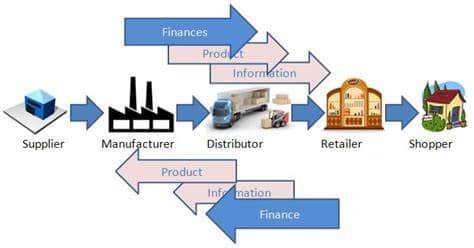In the realm of international trade, two terms often cause confusion among many – sourcing and procurement. Despite their apparent similarity, these terms carry distinct meanings and implications. This article aims to shed light on these concepts, helping you navigate the complex world of global commerce with ease.
What is Sourcing?
Sourcing refers to the process of identifying, evaluating, and establishing relationships with potential suppliers. It involves a thorough analysis of various factors such as cost, quality, reliability, and delivery times. The goal of sourcing is to ensure a steady supply of goods or services at the most competitive prices.
What is Procurement?
Procurement, on the other hand, is a broader concept that encompasses sourcing. It involves the entire process of acquiring goods and services, from identifying needs, sourcing suppliers, negotiating contracts, to managing relationships and evaluating performance. Procurement aims to ensure that the organization gets the best value for its money.
Sourcing vs Procurement: The Key Differences
While sourcing is a part of the procurement process, the two are not interchangeable. Sourcing is about finding the right suppliers, while procurement is about managing the entire acquisition process. Understanding the difference between these two concepts is crucial for effective supply chain management.
The Six Steps of Sourcing with Mosenwell
To better understand the concept of sourcing, let’s take a look at the six-step sourcing process followed by Mosenwell:
- Identifying Needs: The first step in the sourcing process is to identify the needs of the organization. This involves understanding the specifications of the product or service required.
- Supplier Research: Once the needs are identified, the next step is to research potential suppliers. This involves evaluating their capabilities, reliability, and pricing.
- Request for Proposal (RFP): After identifying potential suppliers, an RFP is sent out. This document outlines the requirements of the organization and invites suppliers to submit their proposals.
- Supplier Evaluation: The proposals received from suppliers are then evaluated based on various criteria such as cost, quality, delivery times, and service.
- Negotiation and Contracting: Once a supplier is selected, the next step is to negotiate the terms of the contract. This includes pricing, delivery schedules, and payment terms.
- Performance Evaluation: The final step in the sourcing process is to evaluate the performance of the supplier. This involves assessing their delivery times, product quality, and service levels.
Conclusion
Understanding the difference between sourcing and procurement is crucial for anyone involved in international trade. While sourcing is about finding the right suppliers, procurement involves managing the entire process of acquiring goods and services. By following a systematic sourcing process, organizations can ensure a steady supply of goods or services at the most competitive prices.
FAQs
1. What is the difference between sourcing and procurement?
Sourcing is about identifying and establishing relationships with potential suppliers, while procurement involves the entire process of acquiring goods and services, from identifying needs to managing supplier relationships.
2. What is the goal of sourcing?
The goal of sourcing is to ensure a steady supply of goods or services at the most competitive prices.
3. What is the goal of procurement?
The goal of procurement is to ensure that the organization gets the best value for its money.
4. What are the steps involved in the sourcing process?
The sourcing process involves identifying needs, researching suppliers, sending out RFPs, evaluating suppliers, negotiating contracts, and evaluating performance.
5. What is an RFP?
An RFP, or Request for Proposal, is a document that outlines the requirements of the organization and invites suppliers to submit their proposals.

